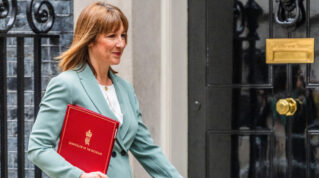Schools’ rising costs will likely outstrip extra funding allocated at the budget, new analysis suggests, after last year’s pay rise eats up more than half of the additional cash.
The Department for Education this week finally published guidance on the way it will distribute cash through the national funding formula in 2025-26, along with notional allocations for schools.
Chancellor Rachel Reeves announced £2.3 billion extra funding at the budget in October, but £1 billion was for high needs.
Today’s guidance states that per-pupil funding will increase by 2.23 per cent on average, but that this includes a 1.28 per cent increase to fund the impact next year of this September’s 5.5 per cent pay rise.
The impact of the rise from September to next March was covered by a separate grant, but this will be rolled into the national funding formula from next year.
‘Most schools might struggle’
Luke Sibieta, research fellow at the Institute for Fiscal Studies, said schools would need to “cover the full year cost of the September 2024 teacher pay award and any staff pay awards in 2025”.

“On the basis of existing policy and forecasts for average earnings, we estimate that schools’ cost will grow by more than 3 per cent next year. On that basis, most schools might struggle to break even next year unless they can find savings somewhere.”
Julia Harnden, funding specialist at the ASCL leaders’ union, said the inclusion of the pay rise cash “means that the net per pupil increase next year is less than 1 per cent, which is unlikely to be sufficient to meet the rising costs of schools as these costs tend to outstrip inflation.
“In particular, it is difficult to see how schools will be able to afford teacher and support staff pay awards at anything like the level required.”
Just 4% of schools financially secure
A DfE survey of schools in summer 2023, published Thursday, found just 4 per cent felt financially secure.

Two in five reported “financial pressure which requires substantial changes to spend profiles and provision”, including cuts to classroom support and curriculum resources.
Most schools projected spending more on energy costs and on teaching and teaching support. Spend areas most likely to be cut included continuing professional development and ICT.
This week’s funding guidance also revealed the government has lowered what is called the funding floor – a mechanism which seeks to limit the impact of annual changes in funding on school budgets.
In previous years, the national funding formula included a funding floor of 0.5 per cent, which was meant to guarantee every school an increase of per-pupil funding of at least that amount, compared to a baseline of the funding they received the year before.
Lower ‘funding floor’
The guidance states that the funding floor for 2025-26 has been set at a lower level of 0 per cent.

However, the department said the baseline for the current financial year “also includes a further uplift to ensure that the 2024 teacher pay award remains fully funded in 2025 to 2026 at a national level”.
“Because of this baseline uplift, the 0 per cent floor in 2025 to 2026 still incorporates a year-on-year increase in funding compared to what schools attracted in 2024 to 2025.”
Jon Andrews, head of analysis at the Education Policy Institute, said comparing this year’s NFF allocations to last “is made more complicated by the rolling in of various grants into the NFF itself”.
“School baselines have been recalculated to include these additional grants, and uplifted further to reflect the fact that these grants did not cover the full financial year.”
















Your thoughts